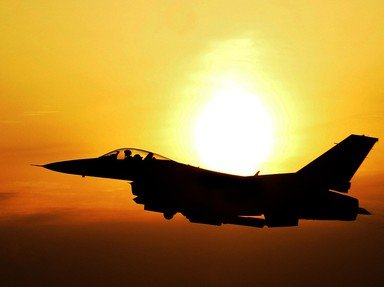Quiz Answer Key and Fun Facts
1. An early design that led to the Typhoon, the Future European Fighter Aircraft, had five member nations: Britain, Germany, Spain, France and Italy. After massive disagreements in 1985, which nation went on their own and designed their own aircraft?
2. One of the primary high-tech sensors used in the Typhoon is PIRATE? What does it stand for?
3. What sort of wing design does the Typhoon have?
4. How many internal guns does the Typhoon have?
5. How many external stations for weapons and fuel does the Typhoon have?
6. The original engine that powered the test version of the Typhoon was the RB199, as used in the Panavia Tornado. What powers the Typhoon now?
7. The Typhoon II is designed to land on a carrier.
8. The Typhoon can engage air targets behind it.
9. Is the Typhoon classed as a stealth aircraft?
10. The Typhoon II can take off and land vertically.
Source: Author
kyleastewart
This quiz was reviewed by FunTrivia editor
Bruyere before going online.
Any errors found in FunTrivia content are routinely corrected through our feedback system.


